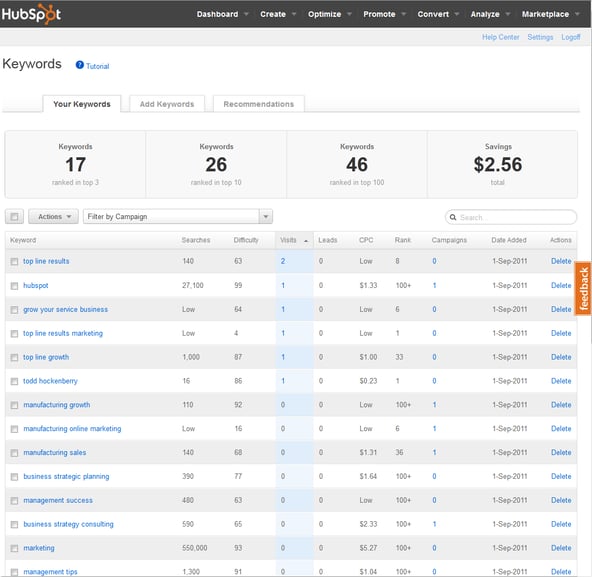Posted by Todd Hockenberry ● Apr 24, 2012
Developing an Inbound Marketing Keyword Strategy
 When establishing a keyword strategy it is important to take into account both general keywords and long tail keywords. General keywords have a large volume of traffic, high competition, and uncertain visitor intent. Long-tail keywords have lower traffic, low competition, and clear visitor intent." Plumbing" would be a general keyword. Lots of competition for "plumbing" and a lot falls under the umbrella of plumbing, like plumbing supplies, companies, and plumbing problems. A long-tail keyword would be "San Jose plumbing company".
When establishing a keyword strategy it is important to take into account both general keywords and long tail keywords. General keywords have a large volume of traffic, high competition, and uncertain visitor intent. Long-tail keywords have lower traffic, low competition, and clear visitor intent." Plumbing" would be a general keyword. Lots of competition for "plumbing" and a lot falls under the umbrella of plumbing, like plumbing supplies, companies, and plumbing problems. A long-tail keyword would be "San Jose plumbing company".
When developing a keyword strategy, it is important to use multiple long-tail keywords to support your general keywords. "Plumbing" is, of course, an important keyword for a plumbing business, but it is far too broad with far too much competition. You need to bolster general "plumbing" with long-tail keywords that are more specific for your business. If you sell plumbing supplies, not plumbing services, you would focus on keywords that deal with plumbing supplies.
Your keywords also need to be relevant. If you sell plumbing supplies, but use plumbing service keywords because they have a high ranking, you are going to be doing yourself a disservice. Even if a lot of people search for plumbing services, they are not going to be able to use your content or products if you don't offer plumbing services.
Anyone who has Googled something specific can tell you how frustrating it is when a search result has nothing to do with your search. When you search for "panda" and you get a bunch of links to Panda Expresses near you, it's frustrating. Sure they use the word "panda" a lot on their website, but they are completely useless if you want to learn about panda bears. Use relevant keywords, not just keywords with high rankings.

Where do you find your keywords? There are a lot of tool for finding and researching keywords. Hubspot has a keywords tool, Google AdWords has a free keyword tool, and Google Wonder Wheel are all good places to find keywords and to research existing keywords.
Once you start doing keyword research you can very swiftly find yourself with hundreds of keywords. To keep yourself organized, make a list that is broken down into groups or themes. An Excel spreadsheet is a great way to keep all your keywords organized. Once you have a well organized list you can use it to create content.
Let's say you want to do a blog post, but aren't sure what to post about. Pull up your spreadsheet, pick a group or theme and pull some keywords out of it to write your blog post about. You'll be creating new content, and you'll be working on SEO. Nothing in inbound marketing happens in a vacuum. Blog posts are content, with keywords, fitting into your SEO strategy, generating social media followers and off-page content, which drives up visits to your site, which produces leads, which turn into customers. It all fits together.
Topics: Marketing




